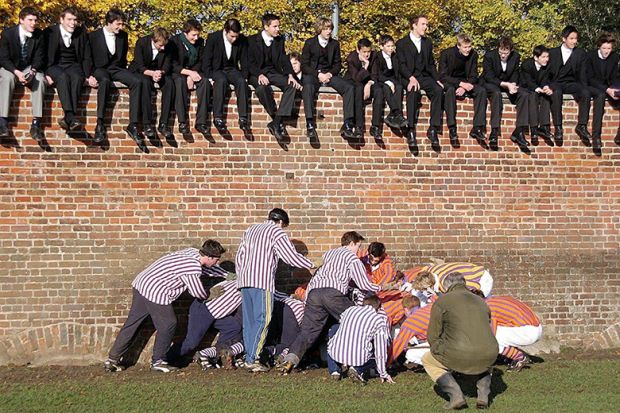Three English universities would potentially have had to turn down places to more than 1,000 students because of their private education and offer them to state school entrants instead if Labour’s proposed cap were implemented, a Times Higher Education analysis shows.
Based on Higher Education Statistics Agency data on full-time undergraduate entrants for the 2017-18 academic year, the most recent statistics available, a further nine institutions would have had to turn away at least 500 private school applicants.
However, spaces would have been available at about 70 institutions that currently have less than 7 per cent of their intake from private schools, according to the figures.
A motion passed at the Labour Party’s annual conference in Brighton seeks to make a raft of changes around independent schools, including a plan to “admit the same proportion of private school students as in the wider population (currently 7 per cent)”.
Although it is not clear whether such a proposal will become official Labour policy, or could even be implemented, Hesa data illustrate how such a cap could affect the sector in practice.
Overall, 10 per cent of young full-time entrants to English universities in 2017-18 whose school type was known came from the independent sector, meaning that a 7 per cent cap would have the potential to affect more than 27,000 students.
Of all English institutions in 2017-18, the University of Oxford had the largest share of young full-time entrants from independent schools at 42 per cent. However, because of its smaller intake, it would not be the most affected in terms of total numbers.
Those institutions would be Bristol, Exeter and Durham universities, where the difference between the 2017-18 intake and a 7 per cent cap would be more than 1,000 entrants.
Among the universities where between 500 and 1,000 places might be affected by such a quota would be the universities of Oxford and Cambridge, but also one post-92 institution, Oxford Brookes University, where almost 30 per cent of first years in 2017-18 went to private school.
If such a policy were applied outside England too, then 1,000 entrants at the University of Edinburgh would also potentially be affected.
At the other end of the scale, Manchester Metropolitan University would potentially have space for almost 267 more students from private schools under a 7 per cent cap, followed by Birmingham City (236) and Liverpool John Moores (235) universities.
And several institutions, many of them specialist colleges, would not have to change their intakes much at all as they already have about 7 per cent of first-years coming from the independent sector.
Register to continue
Why register?
- Registration is free and only takes a moment
- Once registered, you can read 3 articles a month
- Sign up for our newsletter
Subscribe
Or subscribe for unlimited access to:
- Unlimited access to news, views, insights & reviews
- Digital editions
- Digital access to THE’s university and college rankings analysis
Already registered or a current subscriber? Login








